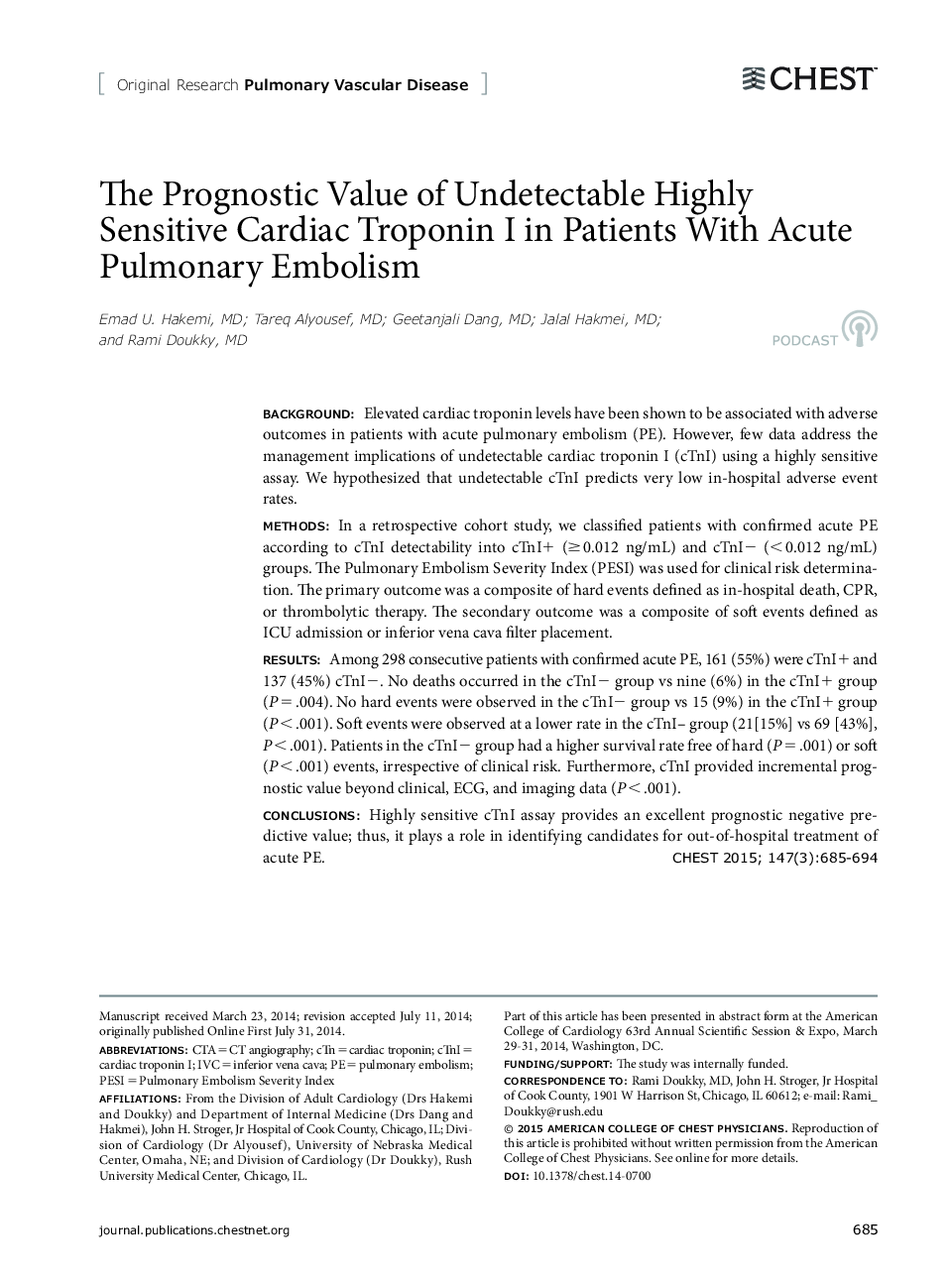| Article ID | Journal | Published Year | Pages | File Type |
|---|---|---|---|---|
| 2899759 | Chest | 2015 | 10 Pages |
BACKGROUNDElevated cardiac troponin levels have been shown to be associated with adverse outcomes in patients with acute pulmonary embolism (PE). However, few data address the management implications of undetectable cardiac troponin I (cTnI) using a highly sensitive assay. We hypothesized that undetectable cTnI predicts very low in-hospital adverse event rates.METHODSIn a retrospective cohort study, we classified patients with confirmed acute PE according to cTnI detectability into cTnI+ (≥ 0.012 ng/mL) and cTnI− (< 0.012 ng/mL) groups. The Pulmonary Embolism Severity Index (PESI) was used for clinical risk determination. The primary outcome was a composite of hard events defined as in-hospital death, CPR, or thrombolytic therapy. The secondary outcome was a composite of soft events defined as ICU admission or inferior vena cava filter placement.RESULTSAmong 298 consecutive patients with confirmed acute PE, 161 (55%) were cTnI+ and 137 (45%) cTnI−. No deaths occurred in the cTnI− group vs nine (6%) in the cTnI+ group (P= .004). No hard events were observed in the cTnI− group vs 15 (9%) in the cTnI+ group (P< .001). Soft events were observed at a lower rate in the cTnI– group (21[15%] vs 69 [43%],P< .001). Patients in the cTnI− group had a higher survival rate free of hard (P= .001) or soft (P< .001) events, irrespective of clinical risk. Furthermore, cTnI provided incremental prognostic value beyond clinical, ECG, and imaging data (P< .001).CONCLUSIONSHighly sensitive cTnI assay provides an excellent prognostic negative predictive value; thus, it plays a role in identifying candidates for out-of-hospital treatment of acute PE.
